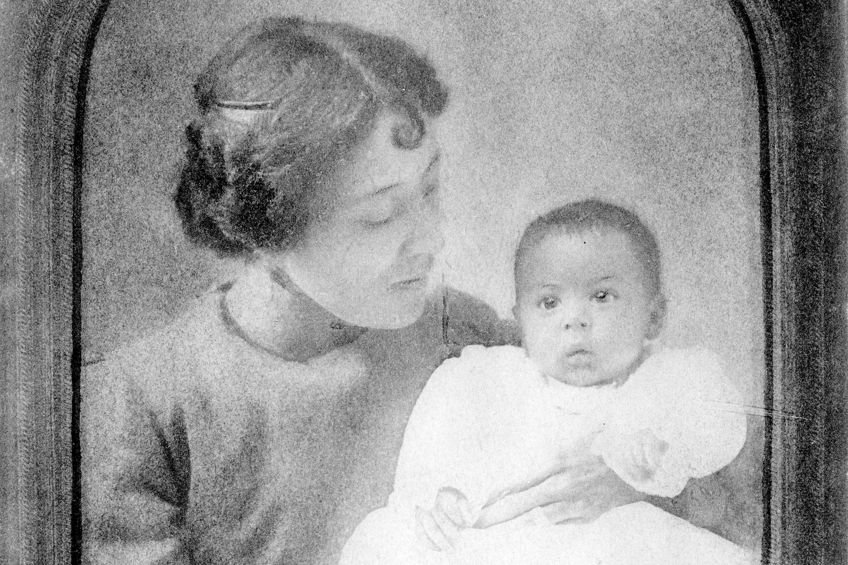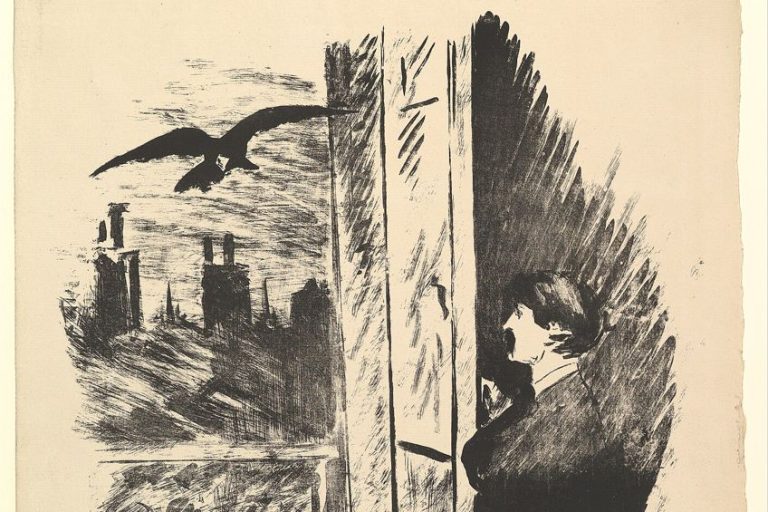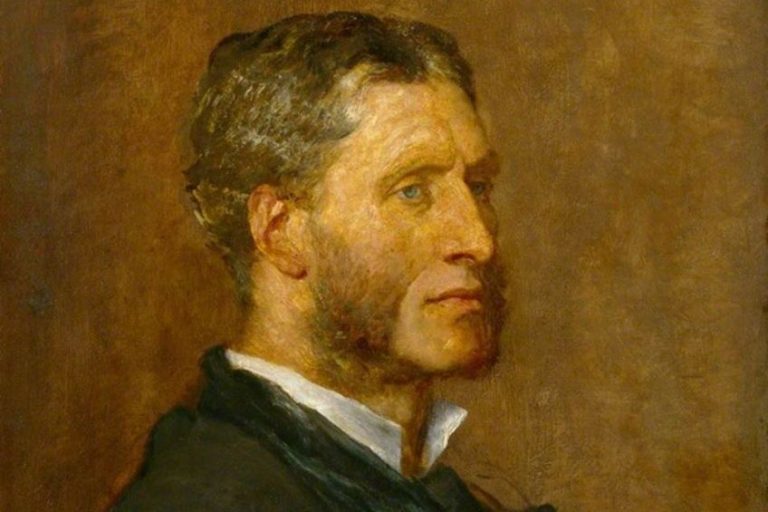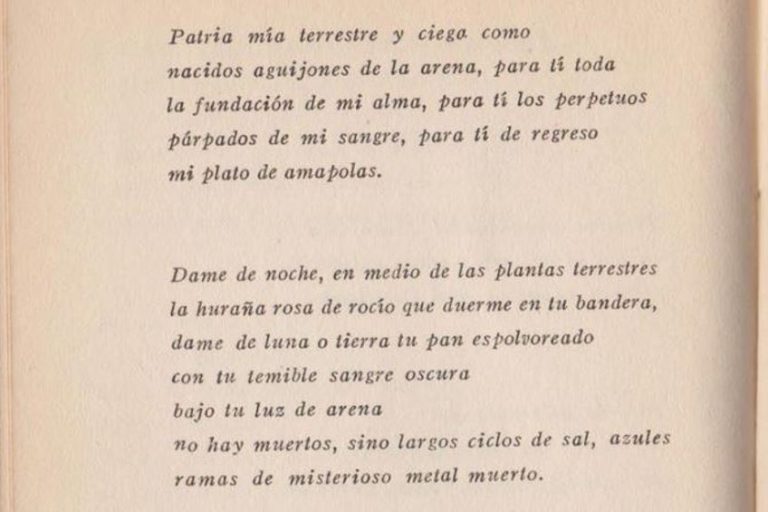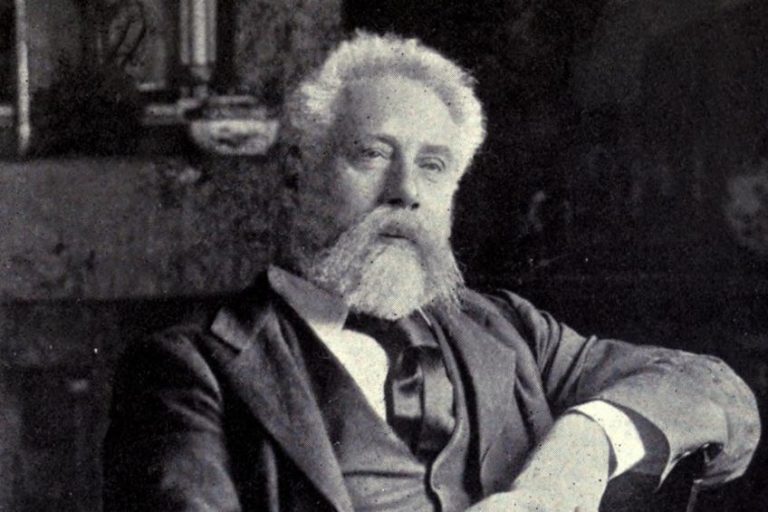“Mother to Son” by Langston Hughes Analysis – A Closer Look
Poems, when powerfully composed, can become an integral part of wider culture, and there are many instances of poems that have managed to succeed in becoming well-known outside of standard literary circles. This is the case with Mother to Son by Langston Hughes, which will be the focus of this article today. We will perform a Mother to Son by Langston Hughes analysis for those who are interested in the Mother to Son poem’s meanings and themes, alongside a brief analysis of the man who wrote the poem in the first place. So, if you have gained an interest in learning a little more about Mother to Son by Langston Hughes, then you are in the right place and can keep reading below!
Table of Contents
- 1 Mother to Son by Langston Hughes Analysis
- 2 Summary of Mother to Son by Langston Hughes
- 3 Biography of Langston Hughes
- 4 A Note on Language in Mother to Son by Langston Hughes
- 5 In-Depth Mother to Son by Langston Hughes Analysis
- 6 Mother to Son by Langston Hughes Themes
- 7 The Influence of Mother to Son by Langston Hughes
- 8 Frequently Asked Questions
Mother to Son by Langston Hughes Analysis
| Date Published | 1922 |
| Type of Poem | Free verse |
| Rhyme Scheme | Variable |
| Meter | Variable |
| Topic | Life |
Mother to Son is one of the most famous poems by Langston Hughes. The poem is an important one in the development of Harlem Renaissance poetry. The poem was published in the pre-Civil Rights Movement period in the United States, but it would go on to have an influence on that period of social change. In the sections below, we are going to perform a Mother to Son by Langston Hughes analysis to see why this is the case

Summary of Mother to Son by Langston Hughes
While we are going to perform an in-depth Mother to Son by Langston Hughes analysis in the sections below this summary, it is good to examine a brief summarized section before moving on to the bulk of this work. So, here is a brief list of the few points worth keeping in mind when having a look at the Mother to Son poem’s meanings and themes.
- The poem is about a mother. The general focus of the poem is on the story that the speaker’s mother says to him. The entire poem is presented from her perspective as she gives him advice about how he needs to do his best to rise above the difficulties and horrors of the world.
- The poem focuses on racism. While the poem does not explicitly use words like “racism” or “oppression” or anything similar, the background knowledge aids us in showing that this poem focuses on racism. The mother, as she recounts her story, has only suffered as she has because of who she was born as, and, by extension, who the speaker was born as.
- The poem uses a free verse style. The use of a more freeform structure allows the poem to use a highly informal poetic style that mimics African-American Vernacular English. It presents the message as if it were spoken rather than following standard poetry conventions of meter and rhyme.
This has been a brief overview of some of the major aspects that should be noted when examining any kind of Mother to Son by Langston Hughes analysis. However, if you want to learn a lot more, rather than a short and sweet summary, you can continue reading.
Next, we will have a look at a brief biography of the man who wrote the poem in question.
Biography of Langston Hughes
| Poetic Movement | Harlem Renaissance |
| Years | 1901 – 1967 |
| Place of Birth | Joplin, Missouri, United States |
| Known For |
|
Langston Hughes was an African American writer and activist from Missouri in the United States, who became one of the major figures in the artistic period known as the Harlem Renaissance. He wrote in many different mediums, such as poetry, prose, dramatic pieces, and non-fiction writings. He is often best remembered for his poetry today, and many of his poems have become important pieces in early to mid-20th-century African-American literature. In terms of poetry, he was also integral to the development of a form known as jazz poetry.

He started writing early in his life, and his work would go on to become well-known in local and then wider national circles, he became an active member of the Civil Rights Movement in the United States from the 1940s onwards. He is often remembered best alongside his contributions to the Harlem Renaissance, which was a period of cultural revival for various forms of African-American artistry and intellectual work, such as music, literature, theater, philosophy, and politics.
This period started in the 1920s and would have an influence on the later Civil Rights Movement in the country.
A Note on Language in Mother to Son by Langston Hughes
Something that poems are often deftly adept at doing is adopting a specific type of vernacular, and that is the case with Mother to Son by Langston Hughes. This poem makes use of early-20th century African American Vernacular English, or AAVE. This is a type of English that arose out of African-American communities and has links to slave communities, Southern American dialects, and certain linguistic characteristics that were carried over from African countries.

This type of English is immensely influential in the present day and is often at the forefront of developments in the language but is often deemed to be a kind of slang by those who, generally, don’t know any better (or those who don’t want to know any better). There is also an association with this type of English and racist ideas about African American people being unable to speak Standard American English, but this is untrue. It is a variety of English and, therefore, no more correct or incorrect than any other English dialect.
This variety of English should be kept in mind for the below Mother to Son by Langston Hughes analysis as the poem makes use of it.
In-Depth Mother to Son by Langston Hughes Analysis
Before we truly kick off with our Mother to Son by Langston Hughes analysis in this section, something about this poem should first be noted. This thing is that the poem, for the purposes of this analysis, has been artificially broken up into sections. These can be seen as logical breakpoints, but in the actual poem, there are no stanzas. Instead, the text is one whole, unbroken wall of text. This means that when the poem is read, it should be read as a singular whole. We have only broken it up in this sense to aid in the readability of the analysis of the poem in question. No one wants to read a lengthy analysis with no sub-headings, after all.

With that out of the way, we also state that Mother to Son by Langston Hughes is a poem that is deeply personal and reflects an understanding of the usual role that a mother may play in our lives. The mother character makes use of metaphors to explain her point, and these kinds of metaphors need to be understood if you wish to examine the Mother to Son poem’s meanings.
A final very important piece of information to note before we dive into our more in-depth Mother to Son by Langston Hughes analysis is that this poem, as has been expressed above, is focused on the experience of African American people. This poem was written before the Civil Rights Movement in the United States, and that needs to be taken into account. The poem deals with themes of racism and the difficulties of life for minorities. So, as we get started with our analysis, keep these things in mind.
Now that that is out of the way, we can have a proper look at Mother to Son by Langston Hughes and give it the attention it deserves!
Section One
Well, son, I’ll tell you:
Life for me ain’t been no crystal stair.
It’s had tacks in it,
And splinters,
And boards torn up,
And places with no carpet on the floor—
Bare.
The poem opens with its disjointed and free verse style with an indication of dialogue. The first line is from the perspective of the mother character as she addresses her son. She speaks in simple language that should be easy for anyone to understand. The first line does not give way to quotation marks, but quotation marks are essentially implied. The use of the colon at the end of the first line implies that the remainder of this poem will be focused on her direct words to her son.
The second line starts with what she actually has to say to her son. Once again, the form is simple and easily understood. She starts with a metaphor about her life not being like a “crystal chair”. The image of a “crystal chair” is a rather unusual one, but it implies opulence and wealth. Crystal, while not one of the more valuable minerals, is still far more expensive to craft into something than wood or steel, and so the particular use of this term is meant to call our attention to the difficulties in life. If one’s life is not like something wealthy and opulent, then life is likely something difficult and harsh, something that has led to turmoil.

The next few lines reinforce this image of a lack of wealth. Instead of the mother’s life is like a “crystal chair”, it is implied to be a cheap chair with tacks, splinters, torn boards, and no carpeting around it. This is a very stark image that is meant to juxtapose against the feelings evoked by a “crystal chair”. She has not had an easy life. It has been hard and painful. The use of words like “tacks” and “splinters” especially reinforces this. It would be painful to sit on a chair with spikes and shards jutting out of it. Yet that is what she had to deal with.
The final word in this section is just the word “bare”. This follows from the previous line which states that her metaphorical chair was one with no carpet around it. Instead of being surrounded by wealth and ease, it had nothing around it. She had nothing in her life. She had no privileges and no assistance. The poem has given us a powerful and damning image of the difficulties faced by various people in our society.
This persists into the next section in which the more depressing images are replaced by a sense of hope.
Section Two
But all the time
I’se been a-climbin’ on,
And reachin’ landin’s,
And turnin’ corners,
And sometimes goin’ in the dark
Where there ain’t been no light.
The section of Mother to Son by Langston Hughes has transitioned from a focus on the metaphor of the chairs to a more positive affirmation. The mother tells him that despite those difficulties she has been “a-climbin’ on”. This tells us something powerful about the difficulties that she has faced in her life. While they were terrible, and she did not receive the assistance that many have received, she never gave up because of it. She continued to try and rise above it all.

The poem continues with this general idea by using various terms to reinforce the climbing motif. She reached “landin’s” and turned “corners”. All of these terms, used in succession as they have been used here, have been used for the express purpose of serving as a continuation of this idea of persistence and perseverance in the face of the struggles and difficulties of life. She may not be that crystal chair, but she does not care. She will do her best with the life she has been given. We all have our lot in life, and it’s our choice when it comes to what we do with it.
The final two lines resume the darker image that is then juxtaposed against a positive one created earlier in this section by using the binaries of dark and light one after the other.
She refers to her life as sometimes being “in the dark” and there has been “no light”. This shows us that the poem while focusing on the idea of persevering despite the immense challenges of life, still acknowledges the inherent unfairness and horrendous nature of some having to face such difficulties. She knew her life was often in the darkness, but she could not allow herself to succumb to it. The final section of the poem continues with this idea.
Section Three
So boy, don’t you turn back.
Don’t you set down on the steps
’Cause you finds it’s kinder hard.
Don’t you fall now—
For I’se still goin’, honey,
I’se still climbin’,
And life for me ain’t been no crystal stair.
The very first line of this section is a powerful affirmation and statement to her son to never “turn back”. One must always go forward. The metaphor of the chair has since been abandoned in favor of a new metaphor, and this one is focused on stairs. The second line entails the mother telling her son that he must never go down “the steps”, and these steps are representative of life. We can go up or we can go down. This is presented to us as a binary. Do we want to try and improve our lives or slip back into an even worse life?

The third line tells us why someone might slip backward, and that’s because it’s “hard” to keep going up the stairs, but she tells her son that he must not “fall now”. He must keep rising, and here we see a return to an image from the previous section. She reiterates, once more, that “I’se still climbin’”. She is still scaling those stairs to a better life. She may be older, and she has her child and all that, but none of it matters. She still has her own life. She still needs to be one who continues to climb up those stairs. She needs to climb those stairs for herself, and she has reiterated that she never plans to go down those stairs again.
She has resolved herself to continue her way up regardless of how long such a thing may take her.
The final line of the poem returns us to the metaphor of the crystal chair. She tells us one last time that, for her, life has not been a crystal chair. By saying this, she is also telling her son that his life may be similar, but that he must do what she did, he must also do his best to rise above it. He must not succumb to the terrible realities of a fatalistic attitude. He must want to climb, even if it’s an incredibly hard thing to do.
Mother to Son by Langston Hughes Themes
When it comes to understanding the overarching Mother to Son by Langston Hughes themes, they are not particularly difficult to find. The ones that are purely textual focus on overcoming the hardships of society. The poem encourages the reader to be hopeful, courageous, and perseverant in the face of those kinds of challenges. Someone with absolutely no understanding or knowledge of the historical context of the poem would find these particular themes hard to miss.

However, the poem was also written by an African American and the character who talks about her life in the poem makes use of African American Vernacular English, and these aspects of the poem more specifically point towards those hardships being racial in nature. The poem wants us to acknowledge the racial injustices and oppression that this mother and, by extension, her son have been forced to face. This poem cannot be read as anything other than a condemnation of the difficult lives faced by African American people. This has led to the poem being one of the most important texts from the Harlem Renaissance movement in the early 20th century.
These themes are powerful ones that can evoke painful, but important conversations about the realities of the effects of racism on the lives of the people who suffer under it.
The Influence of Mother to Son by Langston Hughes
When it comes to the poems by Langston Hughes, Mother to Son is not necessarily at the top of the list of most famous examples of his poetry, but it certainly has become one of the most famous pieces of poetry to come out of the Harlem Renaissance period. So, the literary and historical influence of this poem is something worth considering, especially as the poem relates to the aforementioned Harlem Renaissance.

In addition to this, the Mother to Son by Langston Hughes themes and ideas would go on to be an inspiration to many. One of those many happened to be one of the leaders of the Civil Rights Movement, Martin Luther King Jr. This major figure in the movement would actually reference Mother to Son multiple times in many of his speeches while he was campaigning for African-American rights. This poem has become an important piece of literature in the history of 20th-century African-American literature, and an integral text in the Harlem Renaissance. This is one of the many reasons that a Mother to Son by Langston Hughes analysis is worthy of our time and attention. However, it is far from the only Langston Hughes poem that we should consider.
The stories between mothers and sons are ones that can appeal to many in this world. While this particular poem is focused on an African American mother and her son, the poem can have further appeal beyond that, but understanding the poem within this context is important for an understanding of the poem as a whole. We have performed an in-depth Mother to Son by Langston Hughes analysis in this article and, hopefully, this has led to a greater understanding of the poem for those who have found an interest in it. If the Mother and Song poem’s meanings and themes have appealed to you, it is worth examining a number of other Langston Hughes poems because many are fantastic pieces of literature that deserve your attention.
Frequently Asked Questions
What Is Mother to Son by Langston Hughes?
This is a poem that was published in 1922 and features a dramatic monologue. The poem explores the ideas surrounding what a mother must say to her child. The mother in this poem is one who has struggled her entire life because of the racism in the United States and is trying to advise her son on the best ways for him to succeed. The poem is intrinsically tied to the issues that faced African American people in the pre-Civil Rights Movement era, but as social progress is slow, the poem can still resonate very strongly with many in the country.
Who Was Langston Hughes?
This figure was an African American writer who is best remembered as an integral member of the Harlem Renaissance of the 1920s and 1930s. The work of Langston Hughes spanned multiple genres and mediums. He was a poet, novelist, playwright, and columnist, as well as being an activist for African American civil rights. One of his notable contributions to the development of African American literature was his pioneering work in a new form known as jazz poetry.
What Was the Harlem Renaissance?
This was a period of cultural revival in African American arts and intellectualism in the 1920s and 1930s. The period led to a resurgence in arts in African American communities and led to the proliferation of numerous instances of the arts, such as literature, music, fashion, and so on. In addition, this period also led to a larger development of African American intellectual writings, politics, and activism. The Harlem Renaissance would go on to have a strong influence on the later Civil Rights Movement in the United States.
What Are the Mother to Son by Langston Hughes Themes?
This poem is concerned with a dramatic monologue that a mother gives to her son. When it comes to the Mother to Son by Langston Hughes themes, it is important to keep African American life and culture in mind. The poem deals with issues of racism, hardship, perseverance, and courage. It is a poem that does not shy away from the difficulties that are faced by African American people, especially in the pre-Civil Rights Movement era. The ideas are still resonant to this day despite having been published in 1922.
What Was the Influence of Mother to Son by Langston Hughes?
This poem would go on to have a large influence on the Harlem Renaissance, alongside many other works by Langston Hughes. However, one of the most notable aspects of this poem was that it was referenced numerous times in the speeches of Martin Luther King Jr. during the Civil Rights Movement in the United States. This poem has become an important piece of literature in understanding and highlighting the Harlem Renaissance period and the kind of work that was produced during said period.
Justin van Huyssteen is a freelance writer, novelist, and academic originally from Cape Town, South Africa. At present, he has a bachelor’s degree in English and literary theory and an honor’s degree in literary theory. He is currently working towards his master’s degree in literary theory with a focus on animal studies, critical theory, and semiotics within literature. As a novelist and freelancer, he often writes under the pen name L.C. Lupus.
Justin’s preferred literary movements include modern and postmodern literature with literary fiction and genre fiction like sci-fi, post-apocalyptic, and horror being of particular interest. His academia extends to his interest in prose and narratology. He enjoys analyzing a variety of mediums through a literary lens, such as graphic novels, film, and video games.
Justin is working for artincontext.org as an author and content writer since 2022. He is responsible for all blog posts about architecture, literature and poetry.
Learn more about Justin van Huyssteen and the Art in Context Team.
Cite this Article
Justin, van Huyssteen, ““Mother to Son” by Langston Hughes Analysis – A Closer Look.” Art in Context. November 22, 2023. URL: https://artincontext.org/mother-to-son-by-langston-hughes-analysis/
van Huyssteen, J. (2023, 22 November). “Mother to Son” by Langston Hughes Analysis – A Closer Look. Art in Context. https://artincontext.org/mother-to-son-by-langston-hughes-analysis/
van Huyssteen, Justin. ““Mother to Son” by Langston Hughes Analysis – A Closer Look.” Art in Context, November 22, 2023. https://artincontext.org/mother-to-son-by-langston-hughes-analysis/.


